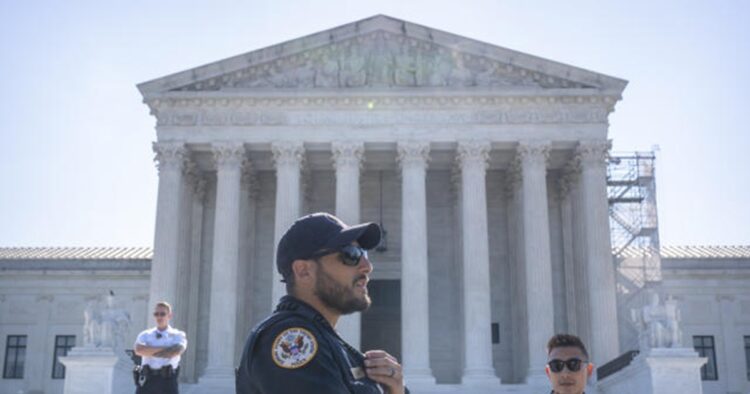In a significant resolution announced on Friday, the US Supreme Court ruled that the government can take guns away from people who are subject to restraining orders for domestic violence. This decision is a notable shift from a series of rulings since 2008 that have generally favored gun rights.
The ruling came in the case of United States v. Rahimi, which involved a Texas man named Zackey Rahimi. In 2019, Rahimi assaulted his girlfriend and threatened to shoot her if she told anyone. She obtained a restraining order against him, which included a provision that prohibited him from possessing firearms.
Rahimi ignored the order and continued to engage in violent behavior, including threatening another woman with a gun and shooting into a former client’s home. This led to him being charged with violating a federal law that makes it a crime for people under domestic violence restraining orders to have guns.
In an 8-to-1 decision, the Supreme Court ruled that the Second Amendment, which guarantees the right to keep and bear arms, does not protect people who are considered a threat to their intimate partners. Chief Justice John G. Roberts Jr. wrote for the majority, stating that when a restraining order determines an individual poses a credible threat to the physical safety of an intimate partner, that person can be banned from possessing firearms while the order is in effect.
Chief Justice Roberts explained that since the founding of the nation, laws have included provisions to prevent individuals who threaten physical harm from misusing firearms. He clarified that the historical analysis required by previous decisions does not need an exact historical match but should focus on broad principles that underpin the nation’s regulatory tradition.
Justice Clarence Thomas, the sole dissenter, argued that there is no historical precedent for revoking a citizen’s Second Amendment rights based on potential interpersonal violence. He suggested that the government should prosecute individuals for criminal violence instead of stripping their gun rights based on a protective order alone.
Legal experts see the court’s decision as a victory for supporters of gun regulations. Adam Winkler, a law professor at UCLA, stated that the decision will make it easier for gun laws to survive legal challenges. He noted that this ruling signals the court’s majority is not entirely opposed to gun regulations, potentially giving lower courts more leeway to uphold such laws in the future.
The decision also aimed to clarify the confusion created by the court’s 2022 decision in New York State Rifle & Pistol Association v. Bruen. That ruling stated that gun laws are constitutional only if there is a historical analog. However, Chief Justice Roberts noted that this historical inquiry should consider broad principles rather than exact matches. This clarification is seen as an acknowledgment that lower courts have struggled to apply the Bruen decision.
ALSO READ: “Japan Aligns with US to Sanction China for Supporting Russia’s War in Ukraine”
The case had previously been decided by the US Court of Appeals for the Fifth Circuit, which initially upheld Rahimi’s conviction but later reversed its decision after the Bruen ruling. The Fifth Circuit argued that there were no historical laws sufficiently similar to the one concerning domestic violence restraining orders.
However, the Supreme Court found this reasoning flawed, stating that historical laws requiring surety bonds and those barring individuals from going armed if they posed a threat were analogous to modern domestic violence laws.
The Supreme Court’s decision strengthens that individuals who pose a clear threat of physical violence can be temporarily disarmed, consistent with the Second Amendment. This ruling marks a significant moment in the ongoing debate over gun control and the balance between individual rights and public safety.

















Comments